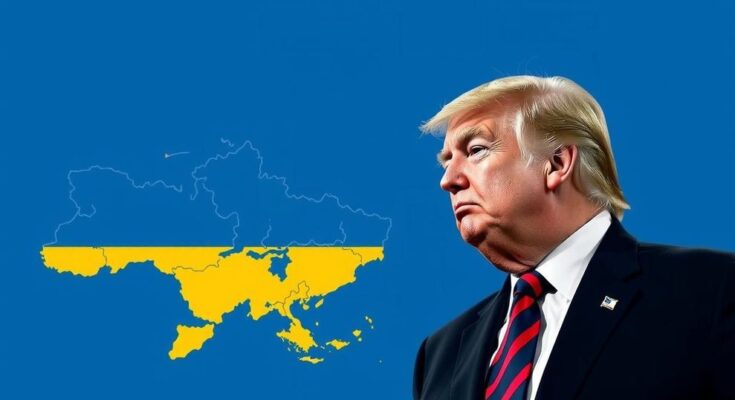Donald Trump’s re-election could drastically reshape the Ukraine war landscape. Potential scenarios include a reduced U.S. military presence with increased European responsibility, sustained European support amidst U.S. withdrawal, Zelensky’s strategic offers to appeal to Trump, or Russia’s continuing military advances. Each outcome holds significant implications for Ukraine and its allies as the situation evolves before Trump’s inauguration.
As the dust settled from Donald Trump’s re-election announcement in November, a tapestry of potential futures for Ukraine was weaving itself. Amidst echoes of his commitment to make and keep promises, Trump alluded to swiftly resolving the Ukrainian conflict—an assertion met with skepticism due to its ambitious timeframe. Nonetheless, four distinct paths lay ahead, driven by the interplay between Trump’s administration and the ongoing battle for Ukrainian sovereignty. The first scenario, often dubbed the ‘Trump plan,’ proposes a retraction of direct U.S. involvement. Instead, it envisions an expansive demilitarized buffer zone monitored by European militaries in exchange for Ukraine pausing NATO aspirations for two decades. This approach parallels Cold War dynamics, where Eastern European nations served as barriers against Soviet ambition while shifting costs and risks onto European shoulders. Furthermore, the perspectives of Trump’s key advisors, known for their contentious views on NATO and support for negotiating terms with Russia, suggest a possible easing of American commitments. In stark contrast, European leaders pledge steadfast support for Ukraine, emphasizing their commitment despite uncertainty surrounding U.S. engagement. The reliance on American military backing has historically been a linchpin of NATO’s strength; however, a U.S. withdrawal would burden Europe with financial and military responsibilities, further emboldening Russia. By weakening NATO, Putin’s strategy to fracture European unity gains traction, threatening to derail Ukrainian resilience. President Zelensky, caught in this political crossfire, has floated intriguing proposals aimed at wooing Trump. His offers, seeking to diminish American troop presence while enticing the U.S. with resource access post-war, hinge on the assumption of a Ukrainian victory—a wishful prospect amid the ongoing turmoil. With signs of domestic discontent brewing in Ukraine and European wariness growing over escalating costs, Zelensky’s negotiation efforts may soon reach a crucial junction, one that could redefine his political landscape. Meanwhile, on the battlefield, Russia appears to be rallying significant momentum, having captured vital territories such as Vuhledar, laying bare the potential for a renewed offensive. With thousands of troops reportedly mobilizing, the specter of further territorial loss looms ominously over Ukraine, escalating urgency in defending their sovereignty. The climactic crossroads emphasizes the shifting balance of power in the region, with each actor poised to influence the war’s trajectory in the coming months. As Trump prepares to assume office, the evolving situation in Ukraine remains uncertain. He is characterized by his transactional approach to geopolitics, and thus, it remains unclear whether he will pivot toward Russia or embrace a deal that stabilizes the region, elevating his status as a peace-bringer. However, with the conflict’s complex nature and the grim realities on the ground, the months leading to his inauguration, while pregnant with possibilities, will demand astute diplomacy and strategic foresight from all involved.
The ongoing conflict in Ukraine following Russia’s invasion in 2022 has drawn international attention and intervention, notably from the United States and its NATO allies. As the geopolitical landscape shifts with Donald Trump’s re-election, the dynamics of Western support for Ukraine are entering a potentially transformative phase. Trump’s historical skepticism towards NATO and preference for transactional foreign policy add layers of complexity to future U.S. involvement in European security, especially concerning Ukraine’s territorial integrity and sovereignty.
In summary, Donald Trump’s second term heralds a period of uncertainty for Ukraine, with various scenarios emerging based on shifting allegiances and strategic calculations. Whether Trump opts for a reduced American role or finds a new approach to negotiate peace will profoundly impact Ukraine. As Russia consolidates its military gains and European support becomes precarious, the stakes have never been higher. The coming months will undoubtedly test the resilience of Ukraine and the unity of its allies.
Original Source: theconversation.com



